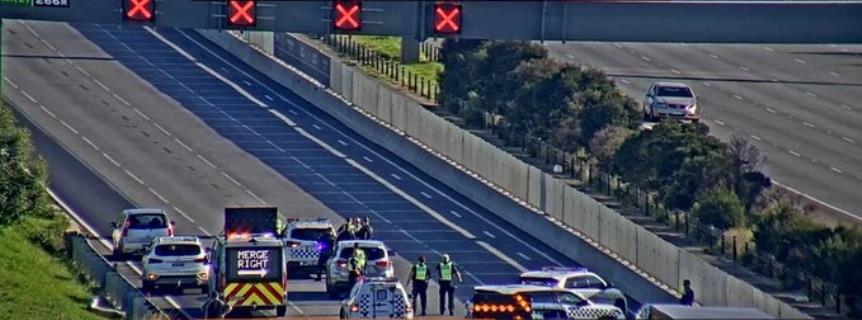By Cam Lucadou-Wells
Police officers were unaware of a triple-0 call warning a man was armed with a knife prior to fatally shooting him on the Monash Freeway in Dandenong North, a state coronial inquest has heard.
The 53-year-old Narre Warren North father of four – who is being identified as XY – was shot during a welfare check which turned into an attempt to arrest him under the Mental Health Act about 10am on 28 May 2020.
In the process, XY was standing on the freeway near his car and removed a 25-centimetre knife from his jacket, Counsel Assisting Susan Locke told the inquest in her opening summary on 7 March.
In response, a police officer fired beanbag shots at XY to “no effect” and XY charged with knife in hand towards the officer.
Another officer fired two semi-automatic pistol shots into XY’s body, and then another four shots as XY continued running.
XY collapsed on the beanbag-shooting officer, who had tripped and fallen as he “rapidly retreated”.
He was pronounced dead at the scene.
Earlier that morning, an Emergency Services Telecommunications Authority (ESTA) call-taker had “inaccurately” and “ambiguously” recorded information about the man’s possession of the knife, Ms Locke said.
And further, the police dispatcher hadn’t noticed the comments and they weren’t broadcast to attending police units.
“It appears that none of the attending police were aware of the information … that XY had left the house carrying a knife or was believed by his wife to be carrying a knife, or the comment in the second CAD (ESTA dispatch system) event of an unconfirmed report of knife with nil sighting.”
The inquest will also examine police tactics, their decision to halt negotiations and arrest XY and the use of “lethal force”, Ms Locke said.
At the time, XY was not been diagnosed with a mental illness. But his mental health had been “deteriorating” in response to the Covid-19 pandemic and other stressors, she said.
His “increasingly erratic and paranoid” behaviour had been reported by one of his children to a school chaplain.
Hours before the shooting, the child texted the chaplain that XY told his children they weren’t allowed to go to school, his wife couldn’t leave the house and they were to turn off the home’s wifi so “people could not monitor them”.
XY’s wife rang the school’s wellbeing officer in a “highly distressed state” saying XY had left the house with a knife and driven off. He’d told his family it would be the last time they would see them.
The school’s wellbeing officer called triple-0 and told a different ESTA call taker that XY left the house with a knife.
The call taker’s notes on the dispatch system stated that the officer “believes M may have had a knife – not confirmed – nil sighting”.
A driver who pulled over and spoke to XY rang triple-0. He claimed XY said: “I don’t care what they do to me. I’ll take a bullet unless they can protect my family.”
At 9.18am, XY called triple-0 from an emergency lane on Monash Freeway. He stated he was in a crisis situation. The ESTA call taker created a priority 1 event.
XY later confirmed on the phone to a police sergeant that he had no knives or weapons.
Ten police officers, including a Frontline Tactical Unit and Critical Incident Response Team, rendezvoused nearby prior to approaching XY.
None of them were a trained CIRT negotiator. An acting sergeant, who was ex-CIRT and had completed and not passed a CIRT negotiator course, was chosen as the primary negotiator.
He was backed up by three members of CIRT, with cover from four other police members.
After blocking off the freeway, the acting sergeant approached XY who confirmed he was unarmed.
After 10 minutes, the acting sergeant opined that the negotiations were “going around in circles”. A decision was made to arrest XY under the Mental Health Act.
After the shooting, police officers examined their bodycam footage prior to giving their witness statements, Ms Locke told the inquiry.
Police are now required to make an “independent recollection” prior to viewing the footage, under Victoria Police policy changes from 17 February 2022, she said.
Fourteen witnesses, including Victoria Police officers and an ESTA quality improvement investigator, are expected to give evidence during the seven-day hearing.
State Coroner Judge John Cain is hearing the matter.







